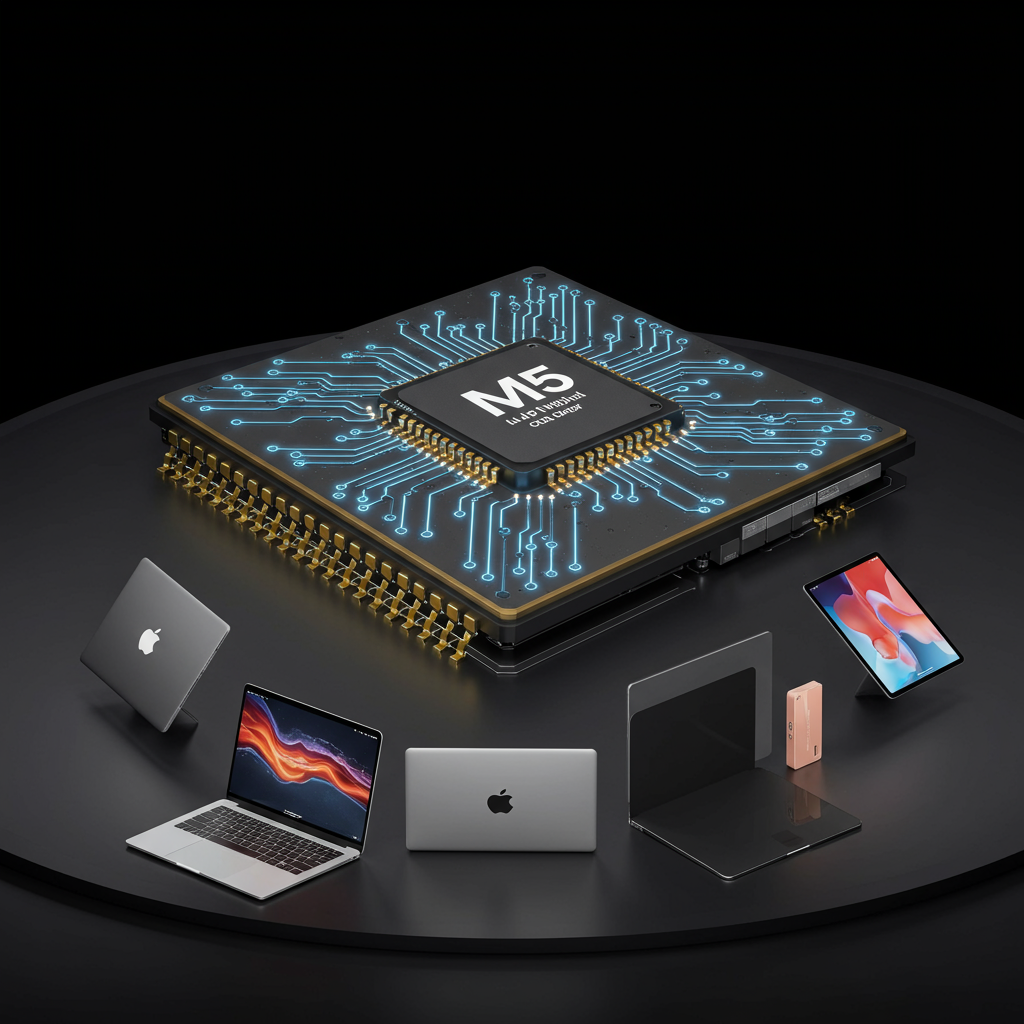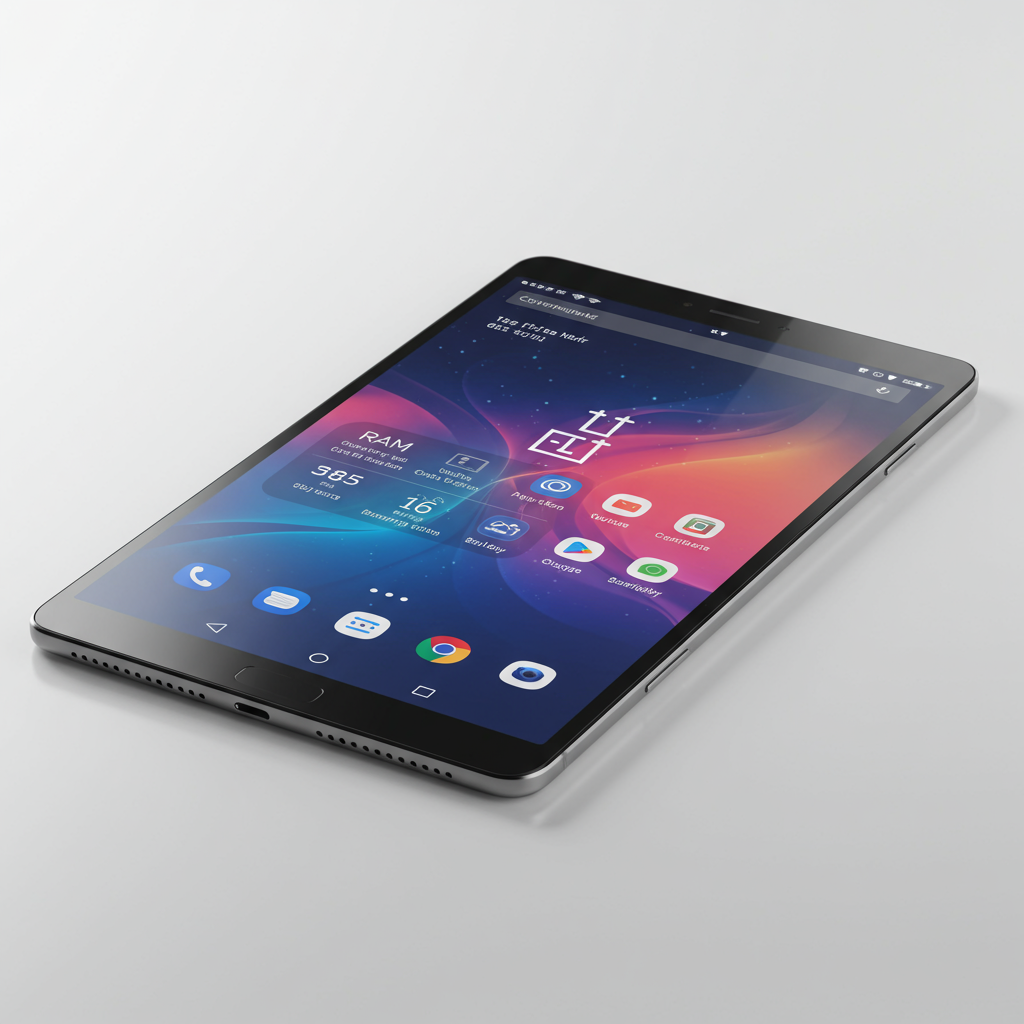Apple is once again pushing the boundaries of innovation with the official unveiling of its groundbreaking M5 chip, a true “next big leap” in artificial intelligence performance for Apple silicon. Announced on October 15, 2025, this formidable system-on-a-chip (SoC) promises to redefine what’s possible on the new 14-inch MacBook Pro, iPad Pro, and Apple Vision Pro. Offering unparalleled speed, efficiency, and advanced on-device AI capabilities, the M5 chip is engineered to empower professionals and creatives alike. Pre-orders for these transformative devices began immediately, with shipping slated for October 22.
Apple M5 Chip: A Revolution in AI Performance
The Apple M5 chip stands as a testament to Apple’s relentless pursuit of silicon excellence, built on cutting-edge third-generation 3-nanometer technology. This sophisticated chip brings substantial advancements to nearly every core component, specifically optimized for the demanding world of artificial intelligence. According to Johny Srouji, Apple’s senior vice president of Hardware Technologies, the M5 ushers in an era of “far more performance and capabilities” across Apple’s flagship Pro lineup.
GPU: Unprecedented AI & Graphics Power
At the heart of the M5’s AI prowess lies its next-generation 10-core GPU architecture. A major innovation here is the integration of a dedicated Neural Accelerator within each core, fundamentally changing how GPU-based AI workloads operate. This architectural leap delivers an astounding over 4x peak GPU compute performance for AI compared to the M4, and an even more impressive over 6x performance boost relative to the M1 chip.
This translates into dramatically accelerated processing for complex AI-driven workflows. Users can now run sophisticated diffusion models in applications like Draw Things or execute large language models (LLMs) locally using platforms such as webAI and LM Studio with unprecedented speed. Beyond AI, the M5’s GPU offers enhanced graphics capabilities, including Apple’s third-generation ray-tracing engine, which provides up to a 45 percent graphics uplift in compatible applications. General graphics performance sees up to a 30 percent improvement over M4 and up to 2.5x faster performance than M1. Combined with rearchitected second-generation dynamic caching, the M5 delivers smoother gameplay, more realistic visuals in 3D applications, and significantly faster rendering times for complex graphics projects. For the Apple Vision Pro, the M5 enables 10 percent more pixels with its micro-OLED displays and supports refresh rates up to 120Hz, resulting in crisper details and reduced motion blur. Developers benefit from seamless integration with Apple’s software frameworks like Core ML and Metal 4.
CPU: World-Class Performance and Efficiency
The Apple M5 chip also features an updated 10-core CPU, meticulously designed with a blend of power and efficiency. This configuration includes up to four of the “world’s fastest performance cores” alongside six efficiency cores. This synergy allows for up to 15 percent faster multithreaded performance compared to the M4. This boost is crucial for demanding tasks such as code compiling, complex data processing, and seamless multitasking across multiple professional applications.
Faster Neural Engine: Powering Intelligent Features
Complementing the GPU’s Neural Accelerators, the M5 integrates an improved 16-core Neural Engine. This dedicated component delivers powerful and incredibly energy-efficient AI performance, making the entire M5 chip fully optimized for AI workloads. This translates into tangible user benefits across the Apple ecosystem. For instance, AI-powered features on the Apple Vision Pro, such as transforming 2D photos into spatial scenes or generating realistic Personas, now operate with greater speed and fluidity.
Crucially, the Neural Engine in M5 significantly enhances Apple Intelligence. On-device AI tools like Image Playground become faster and more responsive. The overall performance of Apple Intelligence models is boosted by the combination of the faster Neural Engine and the unified memory. Developers utilizing Apple’s Foundation Models framework will also experience accelerated performance, enabling them to build more sophisticated AI features into their applications.
Enhanced Unified Memory: Fueling On-Device AI Excellence
The Apple M5 chip elevates memory performance with a substantial increase in unified memory bandwidth, reaching an impressive 153GB/s. This represents a nearly 30 percent increase over the M4 and more than double the bandwidth of the M1. This enhanced unified memory architecture allows the entire chip to access a massive, single pool of memory.
This capability is pivotal for on-device AI. It allows the MacBook Pro, iPad Pro, and Apple Vision Pro to efficiently run larger and more complex AI models entirely on the device, rather than relying solely on cloud processing. This not only enhances speed and responsiveness but also improves privacy. With up to 32GB of memory capacity, the M5 enables users to seamlessly run demanding creative suites like Adobe Photoshop and Final Cut Pro simultaneously, even while handling large file uploads in the background.
M5 in Action: Powering Apple’s Pro Ecosystem
The immediate beneficiaries of the Apple M5 chip are the latest iterations of the 14-inch MacBook Pro, iPad Pro, and Apple Vision Pro. Each device leverages the M5’s capabilities to deliver a superior user experience.
MacBook Pro M5: The Ultimate Portable AI Workstation
The new 14-inch MacBook Pro with M5 is positioned as the “next big leap in AI for the Mac.” It delivers up to 3.5x faster AI performance and up to 1.6x faster graphics compared to the M4, and a remarkable 6x faster AI performance relative to the M1 chip. This power translates into tangible gains for professional workflows:
Up to 7.7x faster AI video-enhancing in Topaz Video (vs M1).
Up to 6.8x faster 3D rendering in Blender (vs M1).
Up to 3.2x higher gaming frame rates (vs M1).
Up to 2.1x faster code compilation in Xcode (vs M1).
With up to 24 hours of battery life and faster SSD performance supporting up to 4TB of storage, this MacBook Pro is designed for professionals who need sustained performance whether plugged in or on the go. Upgraders from older Intel-based Macs will experience up to 86x faster AI and 30x faster GPU performance, alongside significantly improved battery life. The new model also offers a starting 16GB of unified memory and an additional Thunderbolt port, all within a sleek design available in space black or silver. It features the Liquid Retina XDR display, an advanced 12MP Center Stage camera, and macOS Tahoe, which deeply integrates Apple Intelligence features like Writing Tools and Live Translation.
iPad Pro M5: Tablet Redefined for AI & Creativity
The new iPad Pro, powered by the Apple M5 chip, pushes the boundaries for creative and professional tasks. It delivers up to 3.5 times faster AI performance than the iPad Pro with M4, and up to an astounding 5.6 times faster than the iPad Pro with M1. This enables advanced on-device AI tasks such as diffusion-based image generation in apps like Draw Things and AI video masking in DaVinci Resolve. The 10-core GPU with its third-generation ray-tracing engine offers up to 1.5 times faster 3D rendering with ray tracing compared to the M4 model.
Storage read/write speeds are up to 2x faster, and models now start with 12GB of unified memory. Connectivity is also significantly upgraded with a C1X modem for up to 50% faster cellular data and a new N1 wireless chip introducing Wi-Fi 7 and Bluetooth 6. The device features an Ultra Retina XDR display with groundbreaking tandem OLED technology for extreme brightness and precise contrast. Coupled with the new iPadOS 26, which introduces a new windowing system and deep Apple Intelligence integration, the M5-powered iPad Pro cements its position as a true laptop replacement.
Vision Pro M5: Immersive Reality Supercharged
The Apple Vision Pro headset receives a substantial upgrade from the M2 to the Apple M5 chip. This transition results in a 10% crisper display rendering, a higher refresh rate of 120 Hz (up from 100 Hz), and approximately 50% faster machine-learning features. These enhancements deliver a more fluid, immersive, and visually stunning mixed-reality experience. Battery life is also slightly improved to around 2.5 hours of regular use. The M5’s raw power ensures that complex spatial computing tasks and advanced AI-driven interactions within visionOS are handled with unmatched responsiveness.
Environmental Commitment: Performance Meets Sustainability
Beyond raw power, the Apple M5 chip plays a crucial role in Apple’s ambitious “Apple 2030” plan to achieve carbon neutrality across its entire footprint. The M5’s industry-leading power-efficient performance helps the new MacBook Pro, iPad Pro, and Apple Vision Pro meet Apple’s stringent standards for energy efficiency. This design choice reduces the total amount of energy consumed over each product’s lifetime. Furthermore, the new devices incorporate significant amounts of recycled content, including 100% recycled aluminum in their enclosures and 100% recycled rare earth elements in magnets, demonstrating Apple’s commitment to reducing its environmental impact.
Frequently Asked Questions
What is the Apple M5 chip’s core innovation for AI performance?
The core innovation of the Apple M5 chip for AI is its next-generation 10-core GPU architecture, which integrates a dedicated Neural Accelerator within each core. This, combined with a faster 16-core Neural Engine and increased unified memory bandwidth, delivers over 4x the peak GPU compute performance for AI compared to the M4 chip. This architectural design enables significantly faster on-device processing of AI workloads, such as diffusion models and large language models.
Which Apple devices feature the new M5 chip and when were they available?
The new Apple M5 chip powers the updated 14-inch MacBook Pro, the new iPad Pro (available in 11-inch and 13-inch models), and the refreshed Apple Vision Pro headset. These devices were officially announced on October 15, 2025, and became available for pre-order immediately. Shipping for all M5-powered devices commenced on October 22, 2025.
Should I upgrade to an M5-powered device for AI workloads or creative tasks?
If you frequently engage in AI-driven workflows, 3D rendering, video editing, or other graphically intensive creative tasks, upgrading to an M5-powered device offers substantial benefits. The M5 delivers up to 4x faster GPU AI performance than M4, up to 1.6x faster graphics on MacBook Pro, and significantly enhanced on-device AI capabilities for Apple Intelligence features. For users with M1 or Intel-based systems, the performance gains are even more dramatic, making an M5 upgrade a highly worthwhile investment for improved productivity and efficiency.
Conclusion
The introduction of the Apple M5 chip marks a significant milestone in Apple’s silicon journey, solidifying its position at the forefront of AI innovation. By deeply integrating Neural Accelerators into the GPU, enhancing the CPU and Neural Engine, and boosting unified memory bandwidth, Apple has engineered a chip that delivers genuine, tangible value to its users. From accelerating professional workflows on the MacBook Pro and revolutionizing creative tasks on the iPad Pro, to powering incredibly immersive experiences on the Vision Pro, the M5 chip is set to redefine expectations for on-device AI performance. This launch not only showcases Apple’s technical prowess but also reinforces its strategic commitment to empowering users with intelligent, efficient, and sustainable technology.




